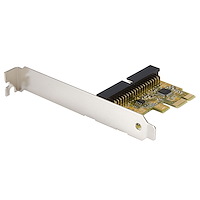hunterjwizzard
Veteran Member
- Joined
- Mar 21, 2020
- Messages
- 890
I've got this somewhat rare Fujitsu windows 2000 tablet I want to restore. It still posts ok but I can't get it to boot. I think the hard drive no longer runs well enough to actually boot the operating system, but it might still be readable. From what I hear the software required to make these things pen-friendly is completely impossible to find, so I pretty much have to pull a good hard disk image from it if I ever want the machine to live again.
Now, I have all manner of SOFTWARE tools at my disposal to do this, that is not a problem.
Where I'm stuck is finding something quality to hook the drive up to a modern computer to pull the image. Its a laptop hard drive, and all I've ever had for those were woefully cheap laptop IDE to regular IDE adapters. Is there something better?
Now, I have all manner of SOFTWARE tools at my disposal to do this, that is not a problem.
Where I'm stuck is finding something quality to hook the drive up to a modern computer to pull the image. Its a laptop hard drive, and all I've ever had for those were woefully cheap laptop IDE to regular IDE adapters. Is there something better?

